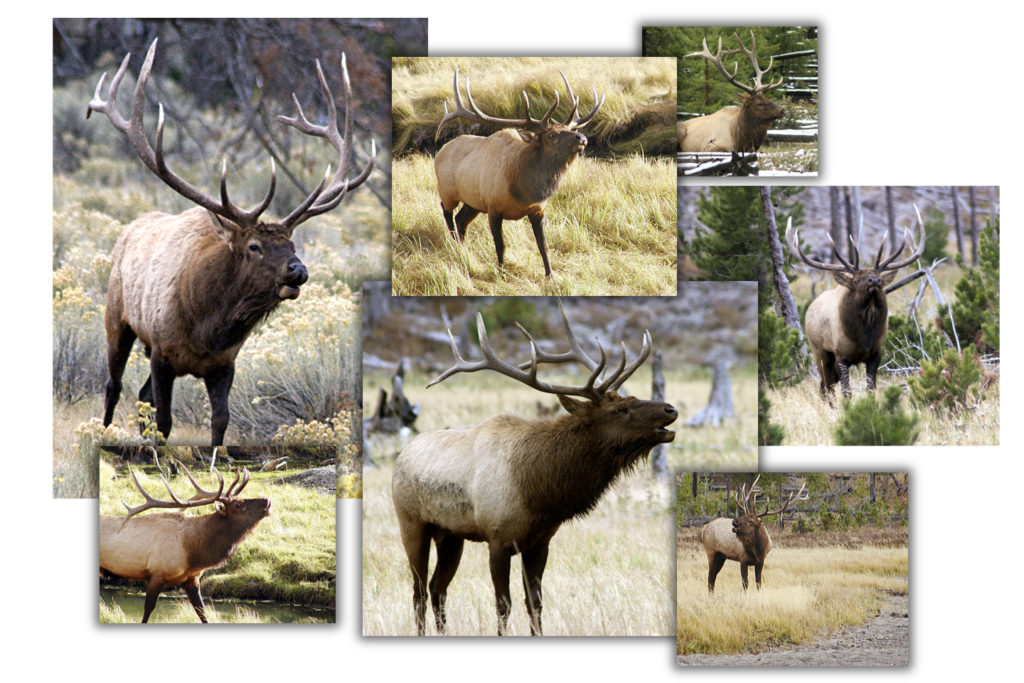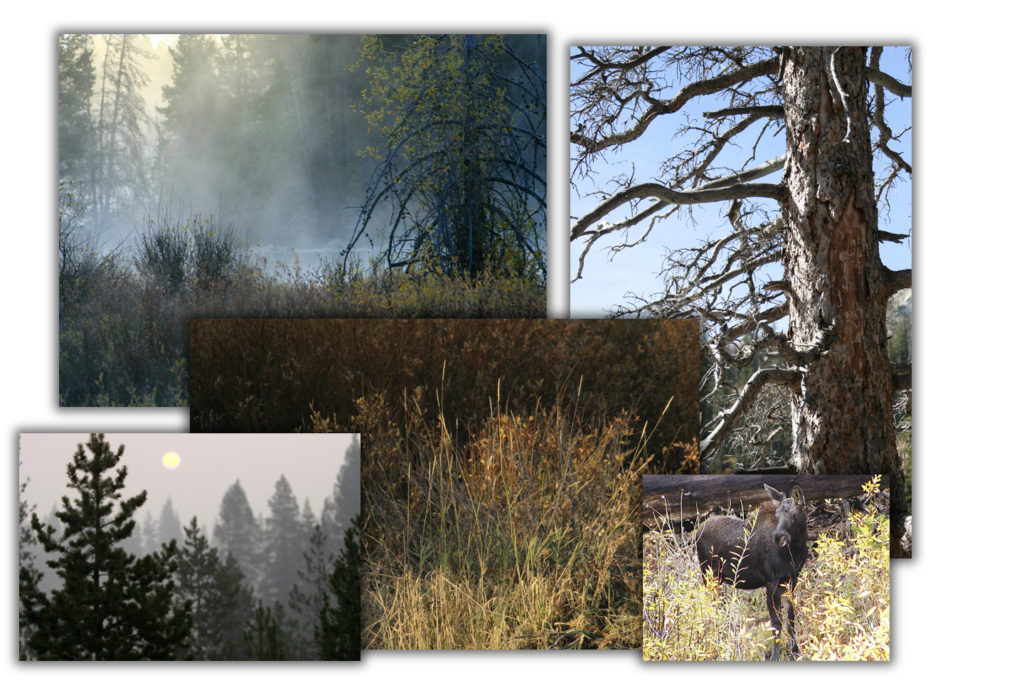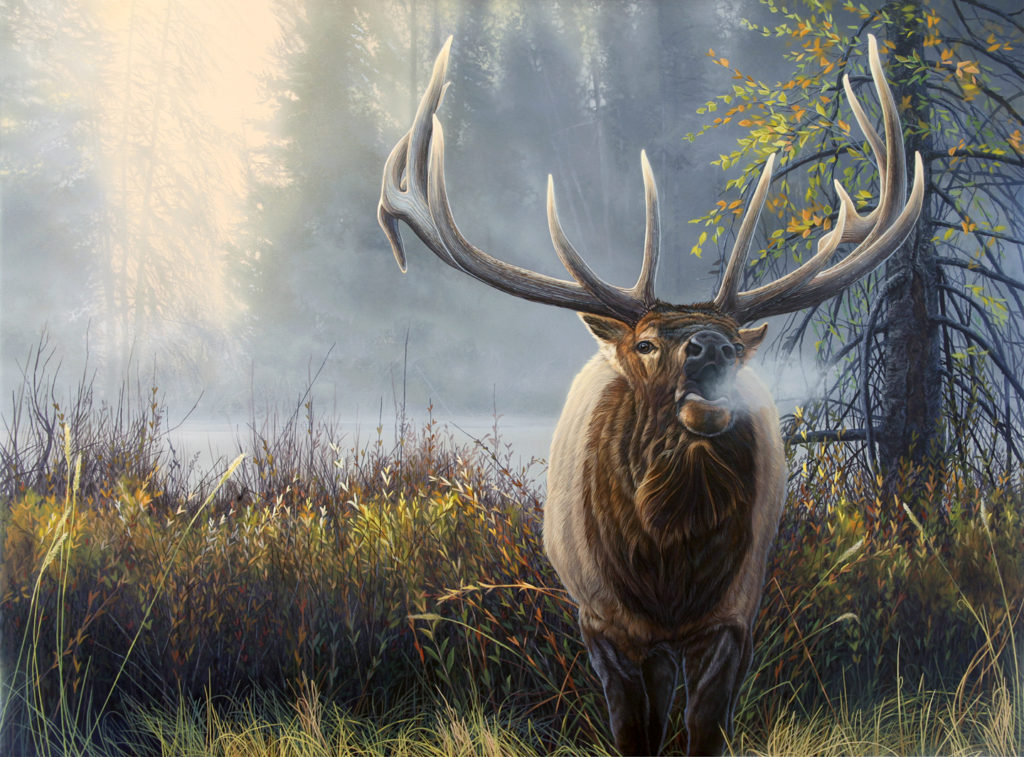North American Big Game – Elk Painting
Painting North American big game requires careful attention to habitat, habits and behavior, whether portraying elk, moose, mule deer or whitetail. Over the years I have covered some ground in both the Yellowstone and Grand Teton National Parks and have over a decade of observation and photos that I’ve taken of elk – bull, cow and calves.

My inspiration for painting a lone bull elk emerging from the brush into the field came from several experiences and scenes that all contributed to an unforgettable up close and personal introduction to a big bull.
I’ve been wanting to bring this concept to canvas for some time – this bull elk painting incorporates a big 7×7 bull that I photographed in Yellowstone.
My inspiration for the scene is from a reference photo that I took on a crisp morning in the Tetons, while photographing a small heard at daybreak on a chilly October morning.
Almost always I leverage several of my reference photos to ensure I can derive the information that I need to bring convincing texture and lighting to my piece. Photography doesn’t always provide the detail in shadow areas where correct anatomy, muscle structure or surface texture can be hidden.
I first primed my canvas with a light warm gray that I mixed using ultramarine blue, burnt sienna, and titanium white. To map out my composition I painted the lightest area of my background defining the morning light breaking through the tree line.
Next I established the horizon line of my background and blocked in the darkest element of my middle ground. This aged tree will bring a lot of character and add to the mood of the scene. As the strongest vertical element in my middle ground, it creates some nice visual pull to establish the focal point for my bull elk.
I painted some texture to define both the tree line and the shoreline, which I will then painted over with layers of light transparent washes to conceal some of the background texture – letting just enough show through to let the viewer know it’s there.
The light washes soften texture and flatten the range of my dark values and light values, which creates depth and atmosphere and presents a pretty convincing representation of fog.
I establish my middle ground by painting the darkest midtones at the bottom of my foliage and the lightest midtones at the top. I use a purple mix of ultramarine blue, burnt umber, a touch of cadmium red medium and unbleached titanium white. I then painted in branches and leaf texture that create the base for my foliage. And I painted this in layers to create volume and depth.
I find that some vertical and angular strokes are painted more smoothly on the horizontal. So I rotate my canvas as needed to achieve this. I also added texture to the aged tree to begin to give some form. At this stage I have 50+ hours in before I even begin to rough in my bull elk.
By roughing in the antlers and body shape of my bull elk, I created boundaries that allowed me to block in the cape and facial features of my elk. I used base colors that are midtone values that can be painted over with layers of highlights and shadows that begin to create form.
To integrate the bull elk into this scene, I adjusted the values of the foliage to fit better with those of the elk. I painted a very transparent wash of ultramarine blue to cool and darken the shadow areas of the foliage. I applied the wash, wiped it off, and let it dry. I then painted leaf and branch texture over top using brighter color and repeat this process as needed.
I textured out the bull elk by painting hair and fur that flows and aligns with the facial and muscle structure and added highlights and shadow values that align with the background and middle ground hues and values. I used the darkest darks in the face of the elk and in my foreground.
The technique that I use to paint hair and fur is similar to that which I use to paint foliage. In both instances my goal is to create volume and movement. I paint layers of soft leaf shapes and more defined leaf shapes, using brighter colors and highlights on the top layers. I do my best to mimic the randomness of nature.
To better integrate the elk into scene, and complete the story of the elk entering into the field, I added some foreground grasses. This stretches the eye to the bottom edge of the painting and while the open field is not in view, it provides the opportunity for the viewer to imagine it.
I focused on refining the lighting on my elk to ensure that it reflects light that is more similar to entire scene – particularly the background which is the source of some strong morning light and cool moody blues. I deepened the shadows on the body of the elk, and brought in some cooler, bluer tones and gave the same attention to the antlers.
To complete the scene, I added more light breaking through the tree line and to complete the integration of my elk into the scene, I added a cold morning breath coming from the elk. This creates movement and creates an opportunity for the viewer to imagine the haunting and thrilling bugle of the bull elk.















